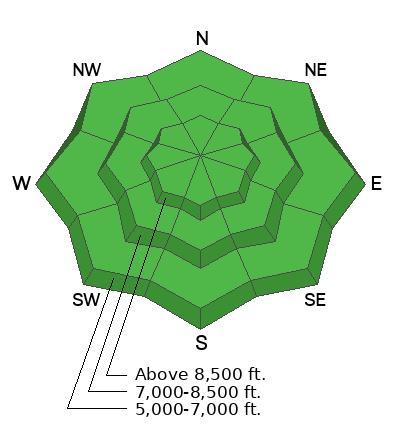The Tony Grove Snotel at 8400' reports 46 inches of total snow (113% of normal SWE) with overnight temperatures again in the mid-30s F. The new weather station on Paris Peak at 9500' in elevation reports 36° F and light winds blowing from the south. The inversion will persist through the workweek, with a weak system passing to the south, bringing clouds, cooling, and a few snowflakes to the mountains on Tuesday and Wednesday. Snow accumulation will be pretty light, not enough to change the avalanche conditions much.
Confidence is increasing, and it’s looking increasingly likely that we’ll get a decent storm over the weekend.
Clear nights and dry air are causing the surface snow and the snow just beneath to weaken. This makes for fast and loud riding conditions now, but this is a potentially poor setup for the future. Coverage is pretty good up high, but the snow is still deceptively shallow at mid-elevations.
Surface hoar is plentiful right now. You’ll find this type of snow across the range in shaded, sheltered terrain, especially in sinks and meadows near canyon bottoms. No avalanches were reported in the Logan Zone since a widespread natural cycle occurred on December 3 and 4.
- Local observations are available HERE.
- Visit our avalanche page to check out this season’s activity across Utah.










